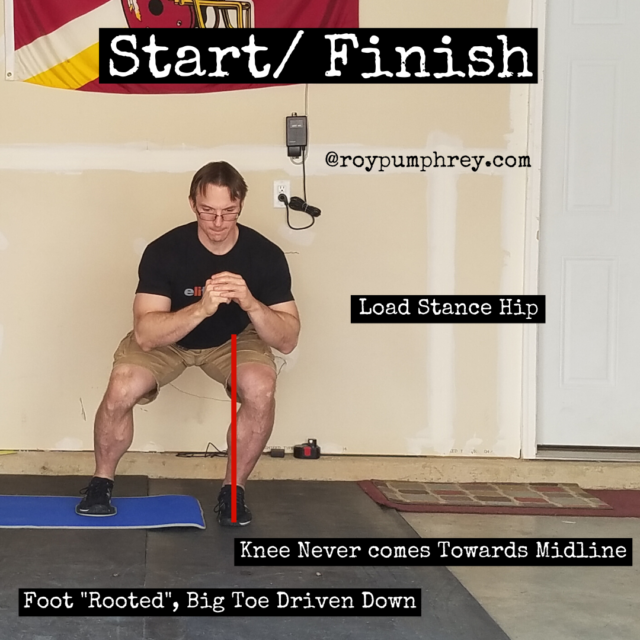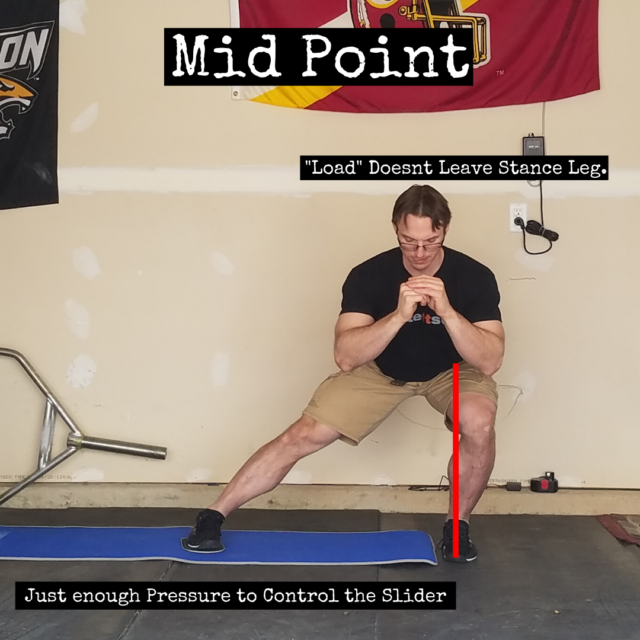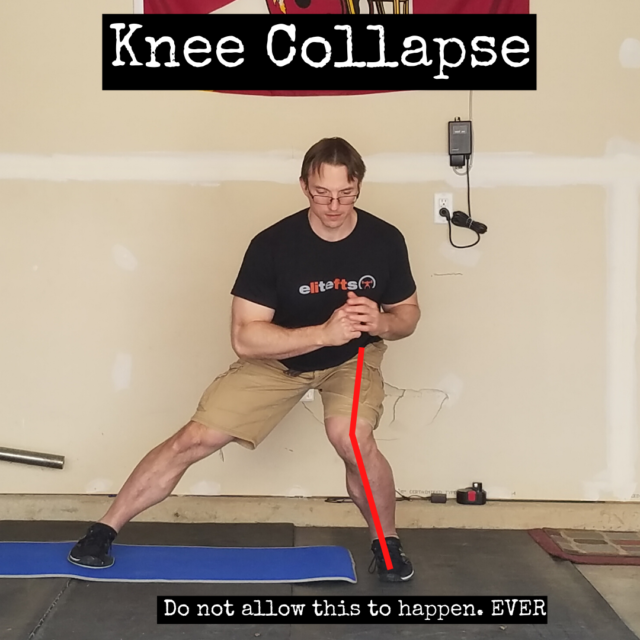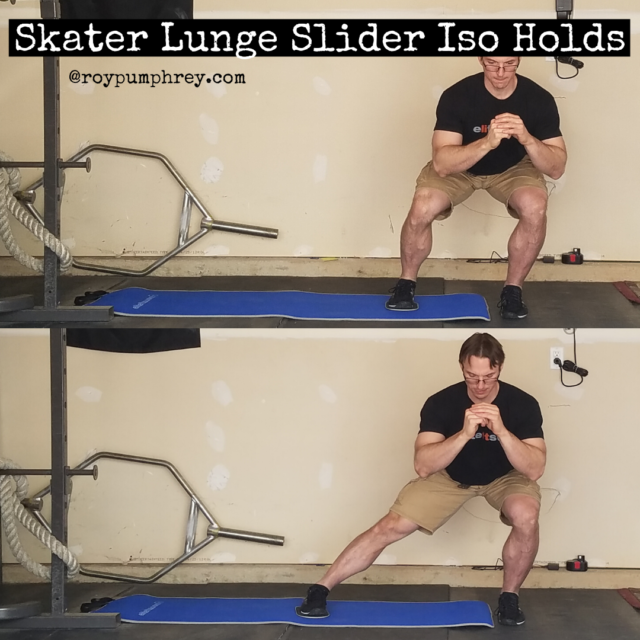
Really good athletes generally have some things in common.
Excellent Power Output:
They generate high force quickly.
“the ability to produce high amounts of power output is what separates truly elite athletes from merely good ones. This has been evidenced in explosive activities, such as sprint running, cycling, and combat sports.” – Optimal Balance Between Force and Velocity Differs Among World-Class Athletes
Excellent Force Absorption:
They tend to have high levels of eccentric strength and “stiffness” at high speed or loads.
“During CoD (change of direction) tasks, two distinct forms of muscle actions are required to quickly decelerate (eccentric action)and accelerate (concentric action) the body during movement. More specifically, eccentric muscle strength may influence CoD speed performance to a high degree because it allows athletes to quickly decelerate the body during high movement velocities which is an important prerequisite for the subsequent acceleration phase of the body and the overall performance of CoD tasks.“- Change of Direction Speed: Toward a Strength Trianing Approach with Accentuated Eccentric Muscle Actions
This is why Lamar Jackson breaks ankles and his ankles don’t break when he puts that foot in the ground and cuts:
If he lacked “stiffness”/ eccentric strength his ankle/ knee/ hip would buckle under those change of direction forces.
Kinesthetic Awareness (Proprioception):
They know where they’re body parts are in space, where they’re headed and how to get there.
“The primary findings of this study indicate that these elite‐level soccer players demonstrated better proprioceptive acuity during active knee rotation movement, stiffer passive knee rotation ROM, greater internal and external rotation strength and higher functional performance than the non‐athletic control group. These findings support those of Lin et al. (2006), who found that proprioceptive acuity of elite tennis players was significantly better than that of amateur and novice players, while the amateur group displayed better proprioceptive acuity than the novice group.”- Do Elite Athletes Exhibit Enhanced Proprioceptive Acuity, Range and Strength of Knee Rotation Compared with Non- Athletes?
Disassociation:
Good athletes can separate the body and perform opposing actions through differing planes of movement simultaneously.
Basically, the better the athlete the more likely they can separate left/ right, flexion/ extension/ internal/ external rotation, tightness/ relaxation.
“What does optimal control suggest about the movement of elite athletes? A naïve prediction might be that because experts achieve a more consistent end result, the entire trajectory of their movements should be more consistent from trial to trial. However, the multiple degrees of freedom available to the motor system mean that end point consistency might still be accompanied by variability in both final posture and earlier components of a movements….Simple movements do have striking regularities and movement patterns do seem to stabilize with practice. However, stabilization is greatest for those aspects of posture that contribute directly to the desired outcome; other parameters are relatively variable….Athletes also fail to reproduce precise kinematic pattern when performing a particular sports-specific activity. This seems sensible, given that sporting scenarios are often erratic, so goal-directed actions will rarely be initiated from an identical starting situation…..What matters is the outcome of the movement, not the movement itself……the central idea is that variance is reduced only among dimensions that are relevant to task accomplishment and is allowed to increase in non-relevant task dimensions“- Inside the brain of an elite athlete: The neural process that supports high achievement in sports
I know it might sound silly but folks tend to have a REALLY hard time getting the right and left sides to do different things at the same time in multiple contexts.
But it’s a NECESSITY that you differentiate (the hips) in order to do Skater Lunge Slider Iso Holds (yes, I know that name is too long) well.
These also train two other important qualities,
Rooting,
Actively using the foot to ROOT, link yourself into the floor. <—-Drive that big toe down HARD.
External rotation of the femur.
“Open the Taint”
Skater Lunge Slider Iso Holds
Whats in a name?
The Skater Lunge Slider Iso Hold kinda sorta looks like an ice hockey stride.
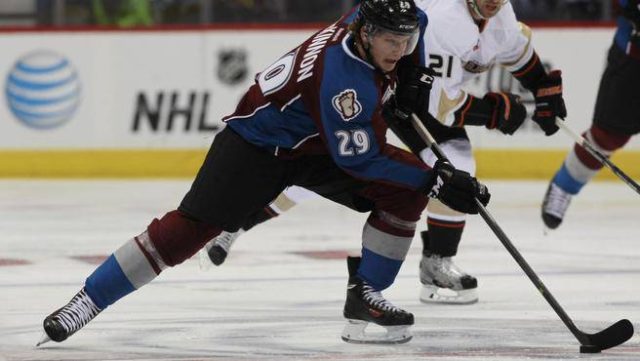
But there is a BIG difference.
In a hockey stride you better be actively exerting FORCE through the extending leg.
In the Skater Lunge Slider Iso Hold the extending leg should have almost zero force in it.
Just enough to move the slider.
The Skater Lunge Slider Iso Hold is COMPLETLEY about the stance leg.
* Quick note: YES, in hockey, the stance leg (non moving/ support leg) is uber important in the hockey stride.
So this is literally NOT sport specific…but it could help your hockey stride, especially if you have trouble maintaining hip position (stability) during the drive phase.
The strength of the stance leg is directly correlated with skating stride.
Why?
Newtons 3rd law of motion (equal and opposite reaction) combined with biomechanical concept of “proximal stability allows for distal mobility” means the stance or anchor leg must be:
- Generating at least as much force as the propulsive leg during the stride.
- Staying in place (proximal stability) to allow the drive leg to achieve maximal range of motion (distal mobility).
“Activation of hip abductor muscles, combined with rapid onset of activation of the knee extensors was the primary muscle activation strategy during accelerative skating. This reflects the characteristic strategy for optimal power production during a sprint start, initiating the movement with a low center of mass, and rapidly abducting the hip and extending the knee to achieve forward propulsion of the center of mass...…This study saw significant classification of ice hockey skill levels based on the above principal patterns of muscle activity, where over 83% of all acceleration strides were classified according to the correct skillset. This suggests there are distinct differences in the way elite and recreational hockey players increase their speed on the ice. Expressing PC scores in the original coordinate space revealed hip-knee extensor activity to be the dominant strategy in elite level hockey skating. Conversely, recreational players demonstrated greater reliance on an ankle plantar flexor strategy during the latter propulsive portion of the ice contact phase, to achieve a powerful stride.” – Lower Limb Muscle Recruitment Strategies Differ Between Elite and Recreational Ice-Hockey Players
Elite players sit lower into the hip and knee, initiate from the HIP, and DRIVE.
If your stance leg is weak:
- How do you even isometrically hold a good “deep” hip/ knee flexion position.
- How can you resist the force and not collapse when the drive leg exerts force on the ice?
The answer is super easy:
You can’t.
Skater Lunge Slider Iso Holds
Checklist:
- “Sit” into the working leg hip.
- Some ankle and knee flexion is expected, but don’t allow those to cover up for a lack of hip strength. The only way to make the hip stronger is to sit into it and STAY there.
- Be “light” on the slider. Just enough pressure to control it.
- ROOT the foot (active big toe), 80% of pressure in the heel, 20% in the toes.
- Actively “open”/ “wind up” the glute on the stance leg and KEEP IT ACTIVE.
- Make sure you’re not rounding over, neutral hip and low back
- The movement is on the STANCE leg, not the reaching leg.
- Never allow the pelvis to rotate.
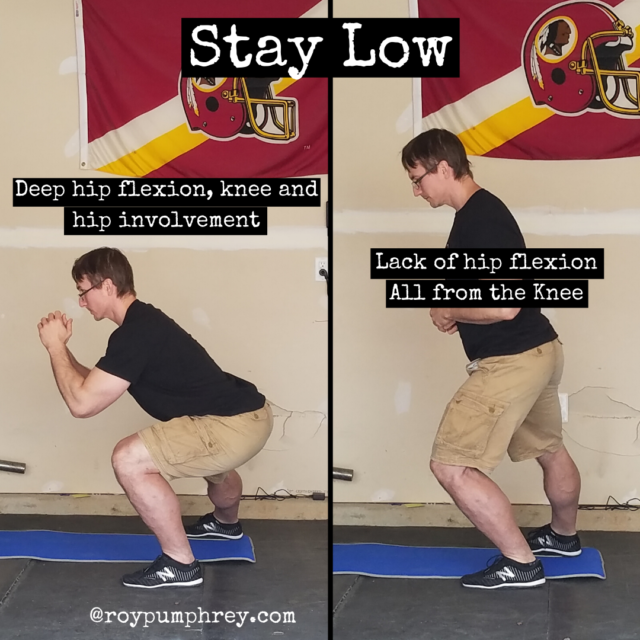
For the uninitiated, you DONT want to look like the picture on the right.
Bro Tips:
- “Chest up” usually helps keep the back neutral especially when you fatigue.
- Almost think about using the stance leg to pull the slider back when its at full extension.
- The most common error is to stand up as fatigue sets in, FORCE yourself to stay “low” in the hips. The best self check on this is to karate chop yourself at the hip crease. Just chop yourself there as a guide to help stay back and keep you in the hips.
- While I’ve put a TON of focus on the hips/ glutes here (like I always do) this will fatigue the hell out of your quads and low back too, so expect that, its normal.
- I don’t think it really matters if you move the extending (slider) leg in a 45 degree angle back or straight out…in fact, I think those both feel slightly different and would treat them as such.
Ultimate Bro Tip:
- You can buy the expensive sliders, they are really good. Or you can go to Home Depot and buy a pack of 4 furniture sliders and those are just as good, and cost like $14.
Home Owners Bro Tip:
- Don’t use furniture sliders on your hardwood or laminate floors. ANY specks of grit under the slider will leave scratches in your floor and over time screw up the slider.
- You can buy booties for sliders here, or I’ve heard you can use socks or a towel, but I’m not telling you to do that because that would be irresponsible because those are most assuredly NOT for that express purpose…but that’s what I’ve heard also works in a pinch.
Just saying….

